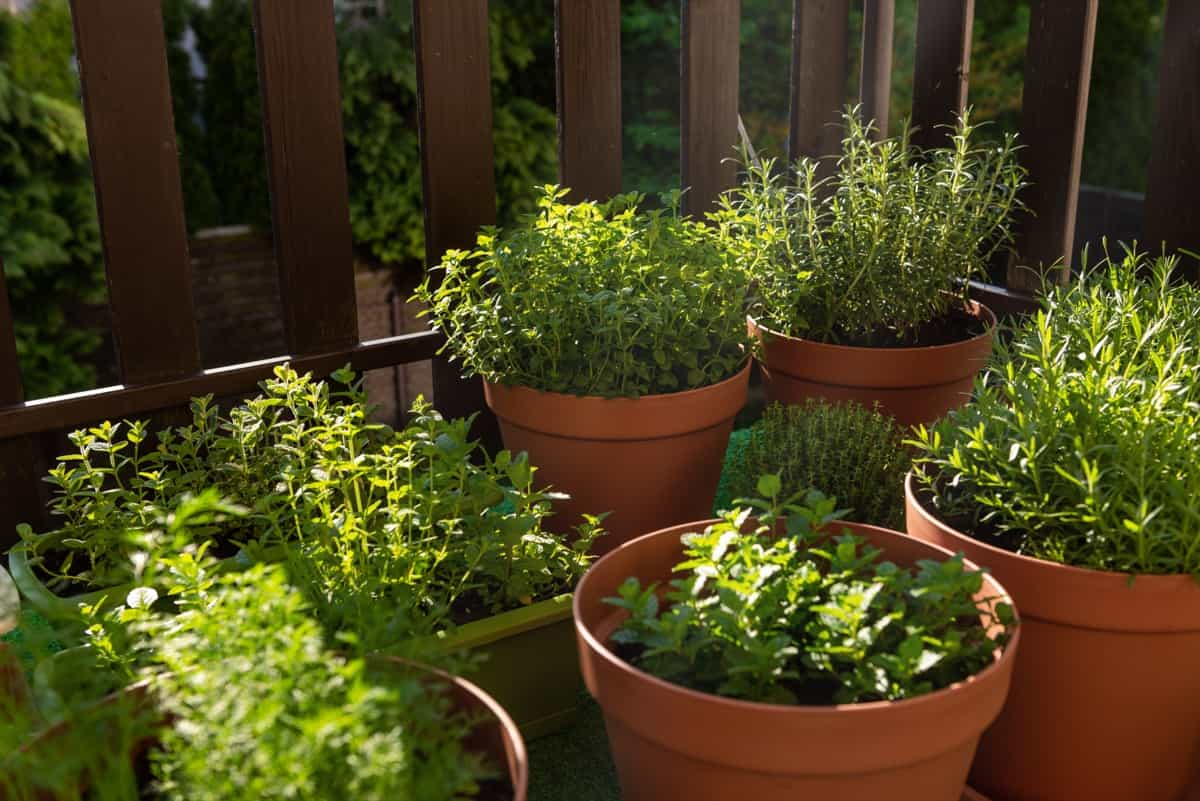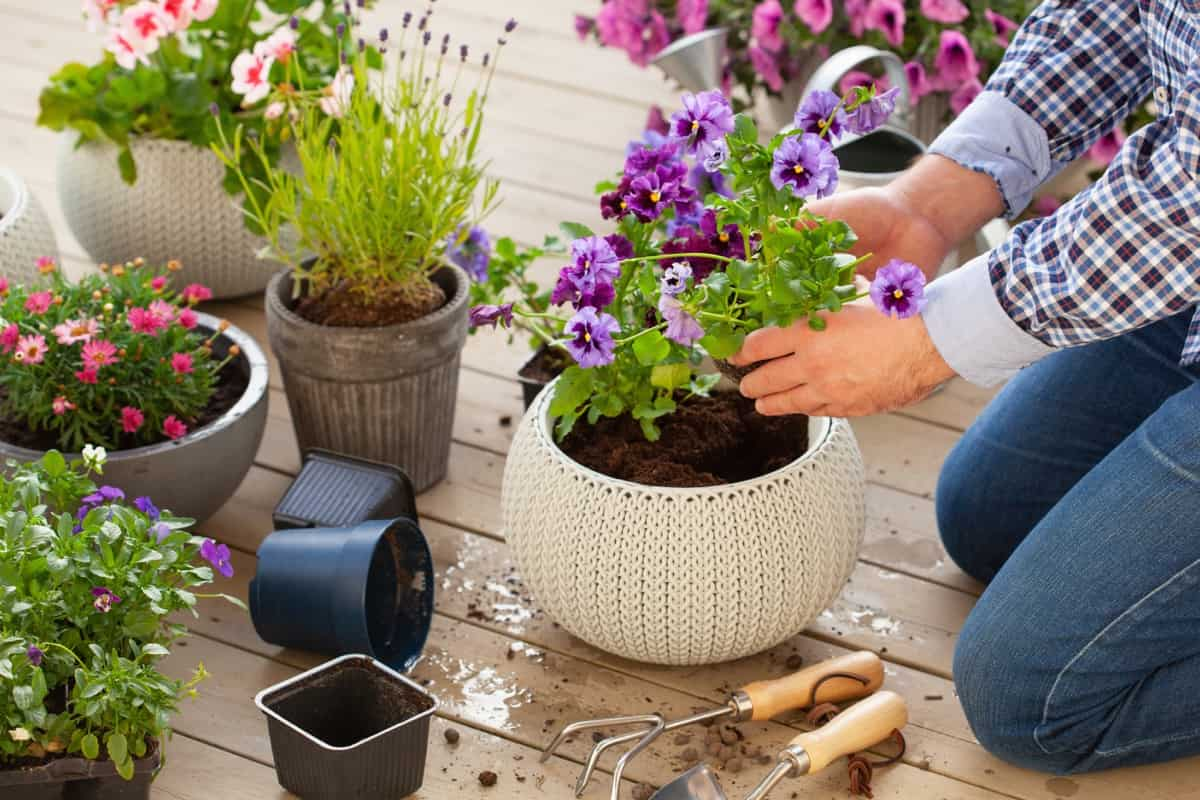Container gardening is the best way to add beauty to your outdoor space, and it’s also a great way to grow fresh fruits, vegetables, and herbs. Container gardening is done in containers instead of in the ground. This can be done with various materials, including pots, buckets, barrels, and plastic bags. People often do container gardening with limited space, such as those living in apartments or other small spaces. It is also popular for people looking for an easy way to garden.

Frequently Asked Questions About Container/Pot Gardening
What Is the Best Container for Container Gardening?
When selecting the best container for growing plants, the most important consideration is the size of the container. The container should be large to accommodate the plant’s roots but not too large that the plant becomes root bound. Another important consideration is the container material. Some materials, such as plastic, can retain heat and moisture, harming plant growth. Clay and ceramic pots are porous and allow excess moisture to escape, which is ideal for many plants.
What Is the Purpose of a Container Garden?
A container garden is great for enjoying plants’ beauty and benefits without committing to a large plot. Container gardens can be placed on patios, balconies, or any other small space, making them perfect for city dwellers or anyone with limited outdoor space. Container gardens are also a great way to grow plants that might not do well in your area’s climate.
By growing them in pots, you can control the amount of sun, water, and other conditions they receive, giving them the best chance of success. So, whether you’re looking for a low-maintenance way to add greenery to your home or hoping to experiment with new plant varieties, a container garden might be just what you need.
What Care Does A Container Garden Need?
Container gardens are a great way to add color and life to your patio, deck, or porch. But, because they are confined, they require much more care than traditional gardens. Check your plants every day or two to see if they need water. If the soil is dry, give them a good soaking. Use a water-soluble fertilizer to keep your plants healthy and growing. Deadhead flowers and trim any overgrown plants to keep them from taking over the container. Bring your pots inside or move them to a sheltered spot if there is a chance of frost or extremely high temperatures.
What Type of Fertilizer Is Ideal for Container Gardening?
Granular fertilizers are easy to apply, but controlling the amount of fertilizer your plants receive cannot be easy. Liquid fertilizers are easier to control but can be more expensive. The second thing to consider is the NPK ratio. This is the nitrogen, phosphorus, and potassium ratio in the fertilizer.
A higher NPK ratio means the fertilizer is more concentrated and should be used sparingly. A lower NPK ratio means the fertilizer is less concentrated and can be used more liberally. The last thing to consider is the frequency of fertilizing your plants. For most plants, once a month is sufficient, but some plants may need to be fertilized more or less often, depending on their specific needs.
In case you missed it: A Step-By-Step Guide for Growing Red Cabbage Microgreens: DIY in Simple Way from Seeds in Containers

Do Container Gardens Need More Water?
Container gardens require more water than in-ground gardens. This is because the soil in containers dries out more quickly due to evaporation, and plant roots have less space to spread out and find moisture. Container gardens also tend to be in full sun, contributing to evaporation and water loss. For these reasons, it’s important to water container gardens more frequently than in-ground gardens, making sure the soil stays moist but not soggy.
How Many Plants Should Be in A Container Garden?
The number of plants that can be successfully grown in a container garden depends on the size and type of container you use. You can use one large or several smaller plants per square foot. If you are using a very small container, like a teacup, you may only be able to grow one plant. Larger containers, such as barrels or half-barrels, can accommodate several plants.
Which Soil Type Is Best for Making Plant Pots or Containers?
Some soils are better for growing plants in pots or containers than others. Potted plants need well-drained soil so that their roots don’t become waterlogged. Look for a potting mix that contains perlite or vermiculite to help improve drainage. Plants in pots or containers will need regular fertilizing to stay healthy.
Choose a potting mix that contains fertilizer, or add a slow-release fertilizer to your planting hole before adding the plant. Heavier soils, especially wet ones, can be difficult to manage in pots or containers. If you’re using heavy soil, ensure its well-aerated so that it doesn’t compact and suffocate the roots of your plants.
What Is the Best Time to Water Container Plants?
Watering container plants is best done in the morning or evening. This allows the plant to absorb the water before the day’s heat evaporates. Watering in the middle of the day can cause water stress on the plant and leaf scorch from the sun. In general, though, most container gardens must be watered at least once daily during hot weather.
In case you missed it: How to Grow Snake Gourd from Seeds in Pots: A Step-By-Step Home Garden Guide for Beginners

How Deep Do Container Gardens Need to Be?
Most container gardens must be six inches deep to support most plants’ root systems. However, some plants (succulents) can be grown in shallower containers.
Conclusion
Container gardening cannot only set up a garden quickly and easily, but it also offers the opportunity to grow new plants that may otherwise be difficult due to soil type or other conditions. With so many options available for container/pot gardening, this article has answered some of your frequently asked questions.
- Feed Your Flock for Less: Top 10 Tips to Save on Chicken Feed
- Ultimate Guide to Ossabaw Island Hog: Breeding, Raising, Diet, and Care
- Hatching Answers: The Top 10 Reasons Your Chickens Aren’t Laying Eggs
- Eggs and Economics: Breaking Down the Cost of Raising Backyard Chickens
- Defend Your Greens: Proven Methods to Keep Iguanas Out of Your Garden
- Ultimate Guide to Cinnamon Queen Chicken: A Comprehensive Guide for Beginners
- Ultimate Guide to California Tan Chicken: Breeding, Raising, Diet, Egg-Production and Care
- Ultimate Guide to Marsh Daisy Chicken: Breeding, Raising, Diet, and Care
- 10 Types of Chicken Farming Businesses You Can Start for Profits